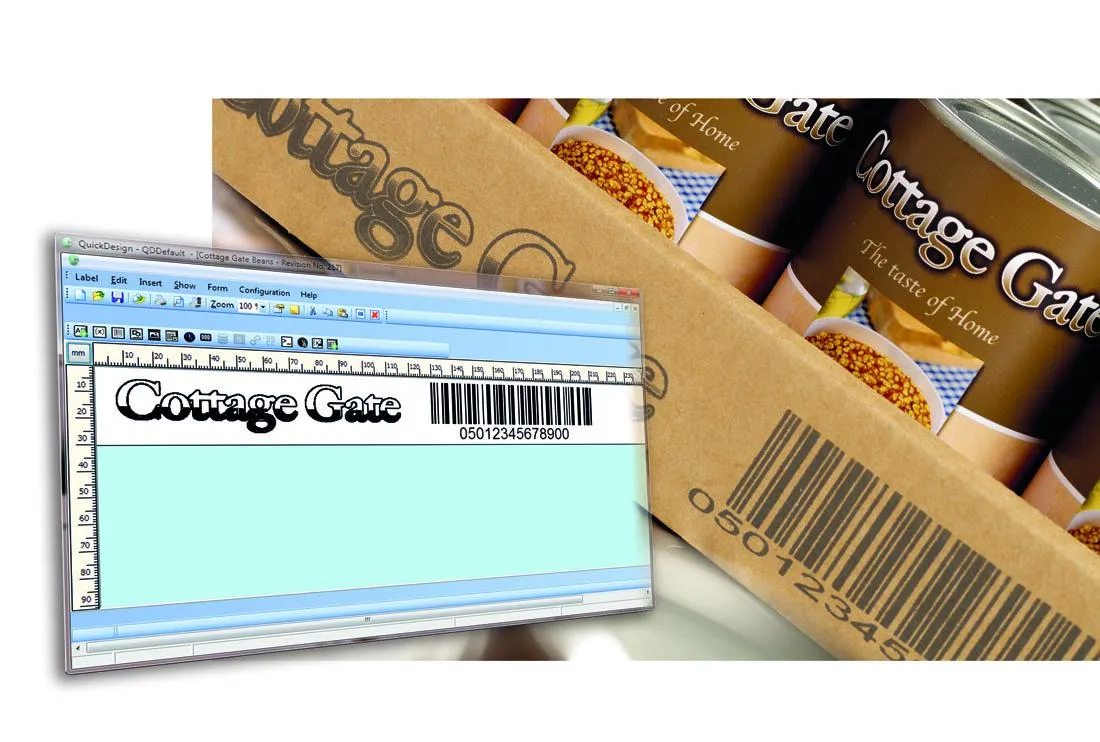Q1 - What is QuickDesign?
QuickDesign is Domino’s windows PC based message design and print control software for automated primary, secondary and tertiary marking.
Q2 – What does QuickDesign do?
Above all QuickDesign is a message/label designer, meaning it is able to create, edit and send messages to all Domino coders. Coupled to this QuickDesign offers a range of value added features which enable customers to automate the management and communication of messages, such as an Operator user interface for message selection and a product table, for management of product information.
Q3 – What makes QuickDesign different?
QuickDesign was built by Domino for Domino, meaning that the drivers within QuickDesigncover the broadest range of features and capabilities of the coders.QuickDesign is also built around a database structure (similar to those used in ERP systems) and not a file structure, this enables QuickDesign to be very stable within a production environment.
Q4 – How can I trial QuickDesign?
QuickDesign is built on the same platform as QuickDesign Lite, therefore we recommend downloading QuickDesign Lite as a first step, simply go to the QuickDesign Lite product page and download the free of charge application. Limited time trials for full QuickDesign can be provided, speak contact your local sales office or distributor for more information.
Q5 – How can I purchase QuickDesign?
QuickDesign is a Domino product and therefore can be purchased from your local certified Domino sales office or distributor.
Q6 – Can I highlight Allergens to meet EU regulation 1169/2011?
Yes, QuickDesign provides a number of tools for meeting this requirement including manual paragraph formatting as well as automated list look-ups which will identify and highlight words within paragraphs automatically.

Q7 – What can I do in Operator Mode?
Operator mode is typically used to select messages to print on production line coders. The interface is greatly simplified to minimise risk of errors occurring. This mode is configured prior to use by an administrator, who will turn on and off certain components in order to make the operator interface match the coder configuration and approved working processes.
Q8 – What can be stored in the QuickDesign Internal Product table?
QuickDesign’s internal product table is a large product table designed to accommodate the needs of the majority of customers across food, beverage and industrial market sectors. As well as providing highly descriptive fields, such as ‘Product name’ there are a range of extra fields into which large quantities of additional data can be placed. When importing product data, the user can map fields from a source file into the product table to ensure the field references are intuitive in the application.There is no practical size limit to the number of records that can be stored within the internal product table.
Q9 – I need to use multiple PC’s to access my labels and Product data, can QuickDesign do this?
Yes, QuickDesign as standard holds all label and product data within a central database, this makes multiple PC access easy to configure. Typically the database is installed on a server or dedicated PC which can be accessed across a standard office network. Clients are installed on the user PC’s which are setup during installation with the IP address of the server and the path of the database on the server. Once configured the system manages permissions to ensure multiple user access in a stable environment.
Q10 – What is Next for QuickDesign?
QuickDesign is always evolving, to add new coder features, improve usability and extend the capability with new modules. Register for QuickDesign Lite, and we will automatically tell you when we have improved the application.